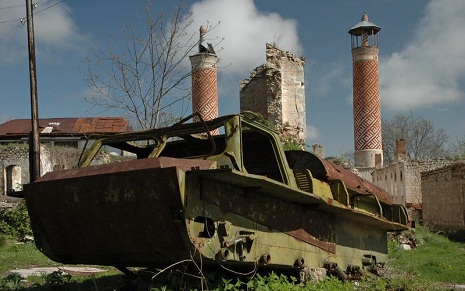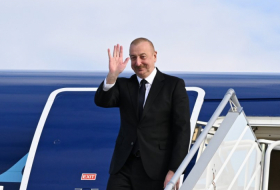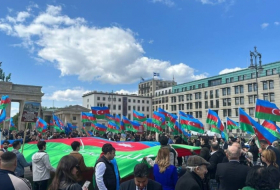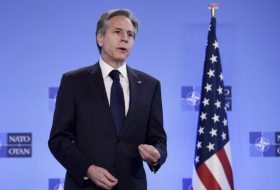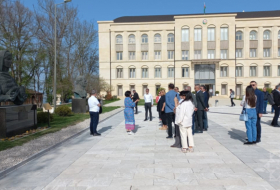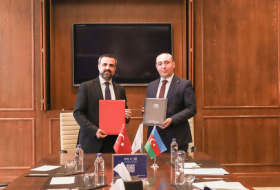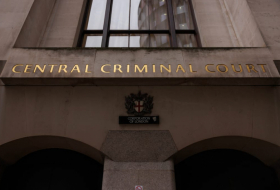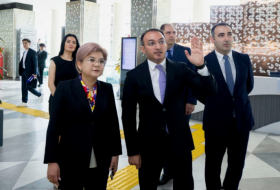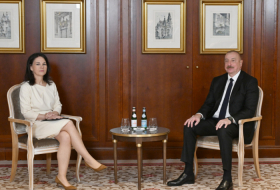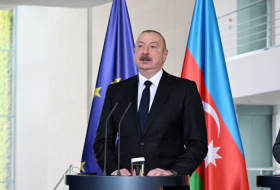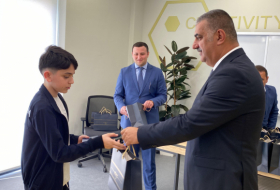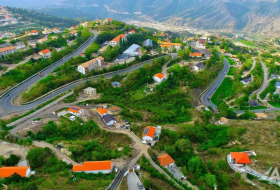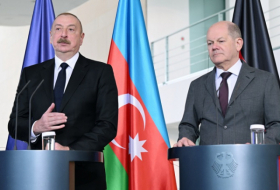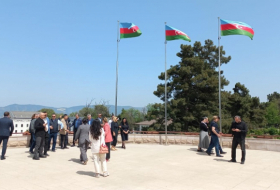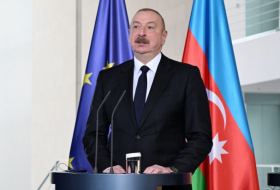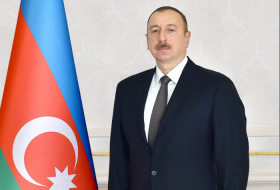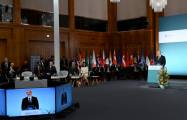The conflict between Armenia and Azerbaijan over the disputed territory of Nagorno Karabakh in the early 1990s cost the lives of around 30,000 people and also displaced hundreds of thousands Azerbaijanis. Hundreds of settlements were razed and cultural monuments were destroyed not only during the war, but also within the 21 years since the 1994 ceasefire agreement.
They either remove the traces of the historical and cultural monuments by destroying it or falsify them under the name of Armenian monuments. According to information from Armenian sources contained in the different periods of time, from space shooting, the reports of the OSCE mission to investigate the situation in the occupied territories, as well as information gathered from other sources, hundreds of historical monuments have been destroyed in these areas.
But Armenians still deny the loss of Azerbaijani monuments in the occupied territories.
Besides mounds in Khojaly, Agdam, Fuzuli, Jabrail regions as well as in the occupied Fizuli, Lachin, Kalbajar, Gubadli, Zangilan regions the cemeteries, mausoleums, grave monuments, mosques, temples and monuments of Caucasian Albania and other national monuments of Azerbaijanis are still being destroyed.
The video by an Armenian of an Azerbaijani cemetery in the Vayots Dzor(Arm.) -Almalyg (Azerb.)( eng.-Apple –ish) region, shows the graveyard has been destroyed. It is clear that many other Azerbaijani monuments or graveyards have met the same fate in Armenia and the occupied Nagorno Karabakh of Azerbaijan. According to the facts gathered by the Ministry of Culture of Azerbaijan, Armenian occupants had destroyed historical and architectural reserve in the Lower and Upper Shusha, Govharagha, Mardinli, Juma mosques, Natavan palace complex, many houses built in the national style, shrines and temples, stone sculptures, ancient tombs, burial mounds.
Azerbaijani cemetery, Almalyg (Vayots Dzor) region of Azerbaijan occupied by Armenia
The two Azerbaijani cemeteries of Saral – one of 20 Azerbaijani villages in Lori region – are now abandoned, with many of the headstones broken.
In 2011, the Armenian non-governmental organisation the Helsinki Citizens’ Assembly did a study of the Azerbaijani cemeteries in the region. It showed that they were mostly in a state of ruin and a decision was made to use grant money from the organization to restore them. But of course the money was wasted for their own purposes.
The Armenians who now live in Azerbaijani Saral village came here from the village of Gushchou in the Khanlar region of Azerbaijan, at the same time as the Azerbaijanis of Saral fled to village of Chardakhlu, Khanlar. The incoming Armenians renamed the village Nor Khachakal. They insist that they did not destroy the graves, but the ruined cemetery gainsays that fact.
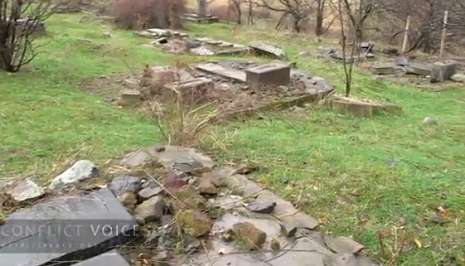
The head of Nor Khachakal (Saral) village administration, Surik Truzian, recalls that people arrived from other parts of Armenia, loaded Azerbaijani gravestones into a vehicle and took them away to re-work or re-sell them.
Eighty-year-old Dmitry Babakhanian, from the village of Kursali, near Saral, who fled Getashen village of Dashkesen, Azerbaijan, said that the thousand or so Azerbaijani graves, some of them made of basalt and tufa, in the cemetery in Kursali have been destroyed. “That is inhuman,” he said.

Nevertheless, he is convinced that his Azerbaijani neighbours did not destroy the graves, and he is right.
In this video an Azerbaijani man originally from Western Azerbaijan which is under Armenian control now, reads aloud the Armenian inscriptions of the tombstones in his village in Azerbaijan.
And here is the list of Azerbaijani soldiers captured by Armenians during the war who were forced to participate in the destruction of monuments and graveyards in Shusha.
Mammadov Vugar: We were forced to destroy the Muslim graveyards, carrying [stone] by car to sell. All Muslim graveyards were destroyed. They wanted to destroy Shusha.
Kazimov Karim: Along with other captured soldiers, I was forced to destroy Ibrahim Khan`s grave, Molla Vagif’s graves and the Bulbuls and Hajibayov monuments and graveyards.
Gafarov Rauf: All the graveyards are destroyed. Probably they intended to take the gold teeth from the dead. They also put a church sign on the mosque.
Bagirov Sahib: The materials from the destruction were used to build a house for Samvel Babayan [formely imprisoned Karabakh Armenian military leader].
Mehdiyev Nazim: The materials were used to make a monument for [Armenian] General Andranik. In her interview to the Azartamartik newspaper, Nagorno Karabakh`s Cultural Ministry Department Director, Janna Aleksanyan, said “we will destroy all the monuments belonging to Azerbaijanis during their occupation of Shusha.”
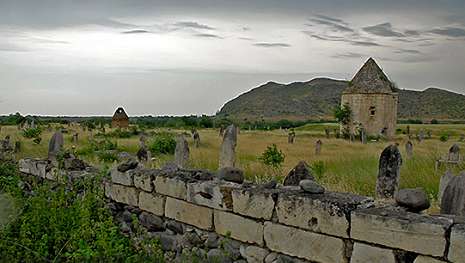
Mass destruction and falsification of historical and cultural monuments in the occupied territories of Azerbaijan is in contrary to, the Hague Convention of the 1954 (on the protection of cultural property during armed conflicts). This convention puts before the armed conflict participant the task to protect cultural values, architecture, art, and historical monuments, movable and immovable cultural values in the territory of each state.
Destruction and falsification of historical and cultural monuments in the occupied territories is a violation of the Convention of the UNESCO "On the Protection of the World Cultural and Natural Heritage".
As we mentioned before, in December 2008, then Council of Europe Secretary General Terry Davis visited both the Armenian and Azerbaijani capitals, but plans to form an international mission to investigate the state of historical and cultural monuments in the region appears to have been delayed. “I am very disappointed by the losses,” Davis said. “It is not only Azerbaijan’s, but also European cultural heritage. They are our common values and we should protect them.”
Azerbaijani government continues its principal resolute and decisive activity against Armenian vandalism, and raises national problems at international level. We hope that Nagorno Karabakh problem will be solved soon.








